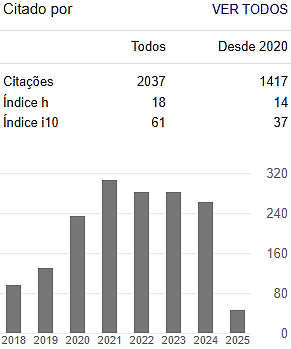POTENTIALITIES OF THE USE OF AGROFORESTRY SYSTEMS IN THE BRAZILIAN SEMI-ARID REGION
Palavras-chave:
sustainable development, Caatinga, integration.Resumo
The mode of exploration of the Brazilian semiarid has followed since the colonization of Brazil, a model of exacerbated extraction of the natural resources. This model has led to the severe environmental degradation of this region and mainly of its main biome, the Caatinga. In this context, several farmers have sought new forms of production, with emphasis on Agroforestry Systems (SAFs). This system consists of combining trees, shrubs, agricultural crops and animals in the same area, seeking to maximize socioeconomic, cultural and environmental values, since they have the potential to enhance the production of environmental goods and services. Although this practice has been practiced for decades by farmers in the country, its study as a science is relatively recent, and its potentiality is still unknown by many. Several studies demonstrate the application of this technique in the semi-arid region, with results that show improvements in soil quality, improved nutrient cycling, biological nutrient fixation, improved income generation among small producers, among others. However, there is still a lack of incentive for government agencies to further disseminate this practice among farmers in this region, as well as information on the social, environmental and economic benefits of SAFs.Downloads
Os dados de download ainda não estão disponíveis.
Downloads
Publicado
2018-07-10
Edição
Seção
Revisão Bibliográfica
Como Citar
POTENTIALITIES OF THE USE OF AGROFORESTRY SYSTEMS IN THE BRAZILIAN SEMI-ARID REGION. Colloquium Agrariae. ISSN: 1809-8215, [S. l.], v. 14, n. 2, p. 163–171, 2018. Disponível em: https://journal.unoeste.br/index.php/ca/article/view/2259. Acesso em: 10 out. 2025.

